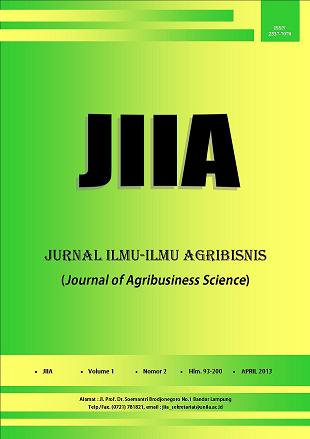ANALISIS TINGKAT PELAYANAN RESTORAN TERHADAP KEPUASAN PELANGGAN: STUDI KASUS PADA DUA RESTORAN DI KOMPLEKS PERTOKOAN WAY HALIM PERMAI KOTA BANDAR LAMPUNG
DOI:
https://doi.org/10.23960/jiia.v1i2.238 Abstract View: 3085
Abstract View: 3085
Abstract
Population and economic growth in Bandar Lampung has been increasing the demand of restaurants. Consequently, competition among restaurants in Bandar Lampung has been increasing in order to get their customers. The main goal of this research is to find out the difference between the customers’ expectation and the restaurant’s performance. Data were obtained form questioning respondents from two restaurants in the business area of Way Halim Permai, Bandar Lampung. Data were analyzed using the Importance Performance Analysis (IPA). It is revealed that both Restaurant A and Restaurant B were under performed in two atributes, i.e. restaurant comfort and hospitality. Spesifically, Restaurant A was under performed in the taste of its food and Restaurant B was under performed in cleanness and tidiness; restroom availability; and wastafel/washing stand availability.
Keywords: atributes, importance, performance, Importance Performance Analysis (IPA), restaurant’s
Downloads
Downloads
Published
How to Cite
Issue
Section
License
Authors who publish with this journal agree to the following terms:
Authors retain copyright and grant the journal right of first publication with the work simultaneously licensed under a Creative Commons Attribution License that allows others to share the work with an acknowledgement of the work's authorship and initial publication in this journal.
Authors are able to enter into separate, additional contractual arrangements for the non-exclusive distribution of the journal's published version of the work (e.g., post it to an institutional repository or publish it in a book), with an acknowledgement of its initial publication in this journal.
Authors are permitted and encouraged to post their work online (e.g., in institutional repositories or on their website) prior to and during the submission process, as it can lead to productive exchanges, as well as earlier and greater citation of published work (See The Effect of Open Access).














